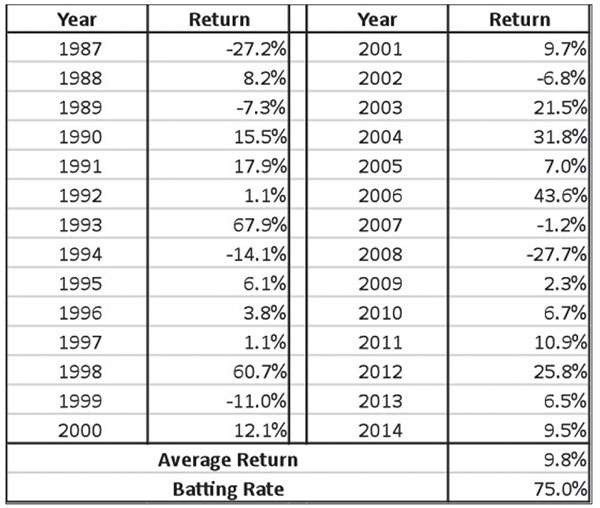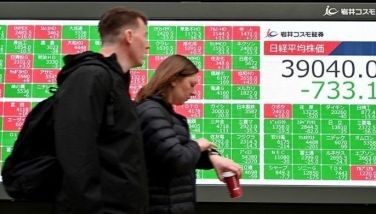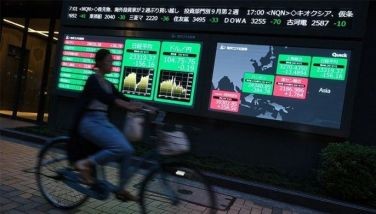From ghost to Cupid
Last Monday, the PSE Index declined the most since June 2013. This was triggered by the devaluation of the Chinese yuan, which caused a global rout in stocks, currencies and commodities. All these earth-shaking drops coincided with the ghost month. Though our stock market has recovered since Monday’s sharp plunge, it is apparent that volatility is back to haunt global investors. Many are therefore asking if they should completely avoid the stock market during the ghost month.
The ghost month
The ghost month is the seventh month of the lunar calendar. Since it is based on the lunar calendar, the dates change each year. This year, the ghost month started on Aug. 14 and will last until Sept. 12. Many Chinese and Filipinos observe ghost month practices. According to Chinese beliefs, the ghost month is the time when spirits of their dead relatives go back to the world of the living. It is a time when they refrain from doing activities that may upset the spirits, such as travelling, getting married, moving into a new home or starting a new business. Consequently, investments, including those made in the stock market, are also put off for a later date.
A spooky time for stocks
The ghost month is generally viewed as an unfavorable month for stocks. This is also the time when European fund managers go on vacation as these are the hottest months of the year in their region. This results in relatively muted trading activity, which compounds the effect of the ghost month on the stock market.
An eerie August
Our index was up 4.4 percent from the start of the year up to end-July. However, the PSE Index went down six percent for the month of August on the back of P17.7 billion worth of net foreign selling. As a result, our index is now down 1.8 percent year-to-date. Our stock market has again witnessed a dreadful August and the ghost month is shaping up to be worse than expected.
A frightening ghost month
Aside from our stock market’s frightening performance this month, we also saw startling moves in other markets and asset classes. We enumerate these below.
1. Last Monday, Aug. 24, the PSE Index fell 488 points, a record decline in terms of points. This is equivalent to a decline of 6.7 percent, the biggest since June 13, 2013.
2. That night, the Dow fell a staggering 1,089 points within 15 minutes after the open and closed 588 points lower.
3. Last Tuesday, Aug. 25, the Chinese stock market was down 7.6 percent.
4. So far, the Shanghai Composite Index is down 11.8 percent for the month of August.
5. This August, WTI oil reached its lowest level since March 2009.
6. The Chinese yuan depreciated by 2.9 percent this August and reached its lowest level since early-2011.
7. The sudden depreciation of the Chinese yuan has contributed to the massive drop of emerging market currencies such as the Malaysian ringgit, the Indonesian rupiah and the Brazilian real. These currencies are back to the historic lows that were seen during the 1997 Asian financial crisis.
Seasons in the stock market
In our book Opportunity of a Lifetime, we devoted the last chapter on investor education. In that chapter, one of the topics that we discussed is seasonality in the stock market. We cited seasonal factors in the market such as the ghost month, the Santa Claus Rally and the January Effect.
Using the book as a guide
In this chapter of the book, we devoted a section to specifically discuss our stock market’s performance during the ghost month. On page 195, we made a table showing the returns and batting rates of the PSE Index on a monthly basis. It was clearly shown our stock market dropped 60 percent of the time during the ghost month, with an average decline of three percent. The other table on the same page showed that during the calendar month of August, our stock market dropped 68 percent of the time with an average decline of 3.7 percent.
From ghost to Cupid
Many are understandably wary about investing during the ghost month. We took time to revisit history and run the numbers to see how investments made during the ghost month perform over the medium term. The peak of the ghost month is on the 15th day of the seventh month of the lunar calendar. It varies from year-to-year, depending on the lunar calendar. But this year, it fell on Aug. 28 (last Friday). For a better comparison, we decided to use Aug. 28 as the reckoning point to determine how the stock market performs from the peak of the ghost month up to Valentine’s day. We show this in the table below.
75 percent batting rate, 9.8 percent average return
In the table below, we show that from 1987 to 2014, the period from Aug. 28 up to Feb. 14 delivered positive returns in 21 out of the 28 years, resulting in a 75 percent batting rate. The average return is also high at 9.8 percent.
Table 2 – PSE Index Returns – From ghost to Cupid – 1987-2014

Sources: Bloomberg, Wealth Securities Research
Incidentally, in page 198 of the book, we made a similar table showing the stock market’s strong move from Halloween to Valentine’s.
Buy during ghost months
It is statistically proven that stocks are usually weak during the ghost month. However, the numbers tell us we should not be scared of these times. Rather than being spooked by the ghost month, one may use the current market weakness as an opportunity to invest. We have always advocated investing gradually in regular increments. Using the statistics we presented in the table above, investors should actually be buying more during the ghost month in order to take advantage of the returns from Ghost to Cupid.
Back to basics
This year’s ghost month coincided with another round of volatility in the global markets. Admittedly, it is very difficult to be an investor during these times. We thus deem it prudent to revisit one’s investment strategy in times like this. Below are some of the parameters that have to be considered.
1. Risk appetite. If you have a high tolerance for risk, then you should be able to withstand periods of extreme volatility such as what we are experiencing now. However, if you have a low risk tolerance, then we recommend you trim your equity exposure to levels you are comfortable with.
2. Asset allocation. Aside from stocks, there are many asset classes one can invest in. These include real estate, businesses, gold, jewelry, paintings, bonds, time deposits and currencies. Recently, the US dollar has become a more attractive investment as it is on a strengthening cycle (see Chapter 7 of our book – Peso Tops Out). If you are still underweight on equities, this may be a good time to gradually start adding to your positions.
3. Time horizon. Time horizon is an important consideration. It is difficult for most investors to engage in short-term trading in a very volatile market. In contrast, a long-term view allows one to withstand extreme volatility such as what we are experiencing now in this ghastly ghost month.
Though risk appetite, asset allocation and time horizon may vary from one person to another, we strongly advise everyone should have a certain portion of their investments in equities. Over the long-term, a diversified portfolio of stocks still gives one of the best investment returns compared to other asset classes.
Philequity Management is the fund manager of the leading mutual funds in the Philippines. Visit www.philequity.net to learn more about Philequity’s managed funds or to view previous articles. For inquiries or to send feedback, please call (02) 689-8080 or email [email protected].
- Latest
- Trending























